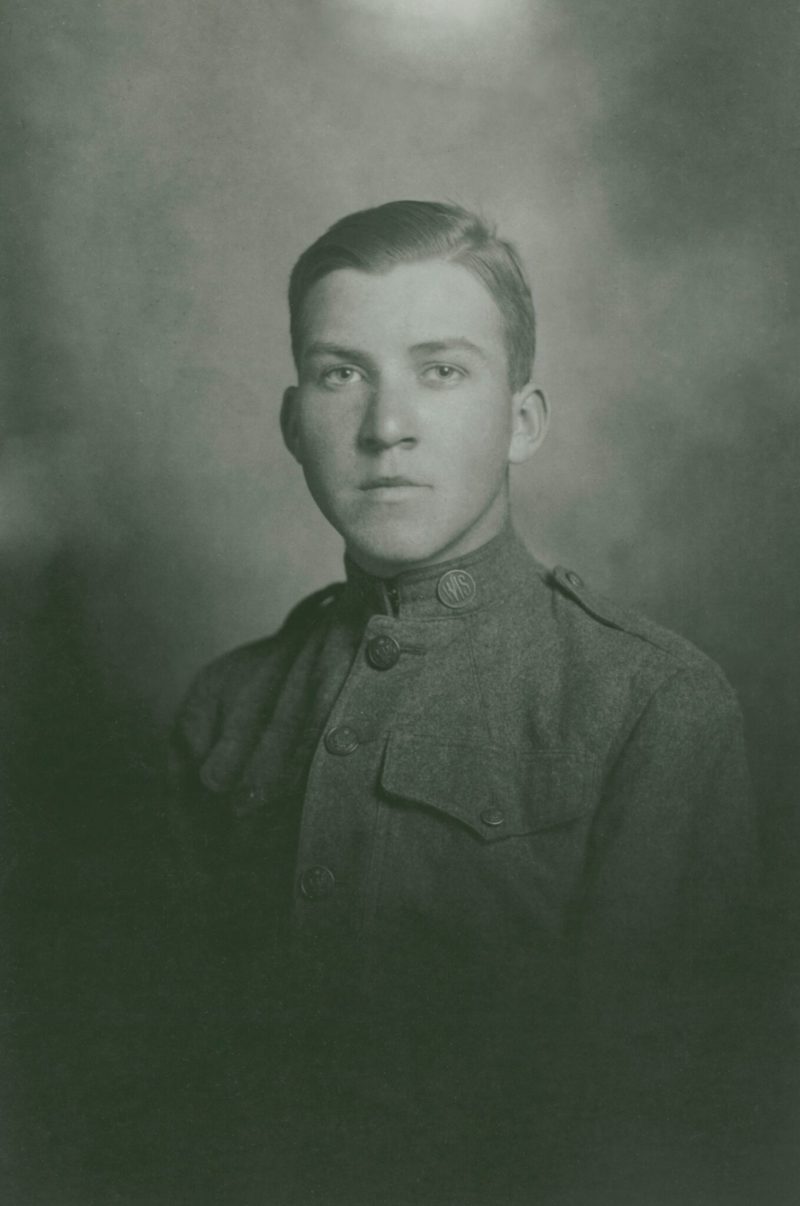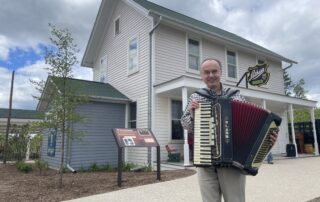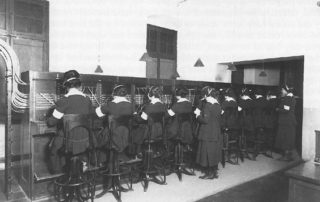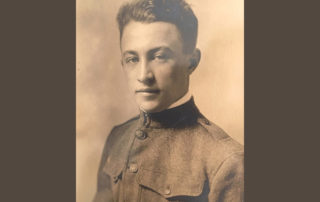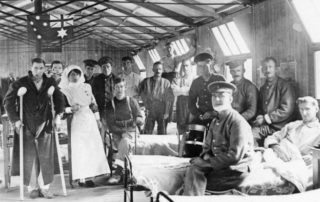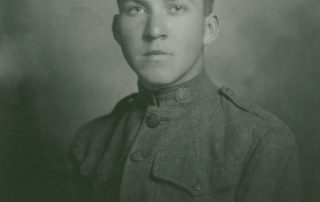Wounded at the Battle of Chateau-Thierry, John J. Haddock of Milwaukee spent two months in the hospital before he was sent back to the front lines with a partially healed foot. When he met up with the 32nd Division he looked around for his unit, Company F of the 127th Regiment.
Get up to my Division, get off, and I–soldiers checked me in, I says, “Is this the 32nd Division?” He says, “Yes.” I say, “I’m lookin’ for the 127th Infantry.” He says, “This is it. You’re talkin’ to it right now.” Well, I says, “I want Company F.” “This is Company F.” I go, “Well, who are you? I don’t know you.” “Well,” he says, “you musta been one of the old members.” I says, “Yes, I was.” “Well you ain’t gonna find many around here, you know.” I says, “I won’t?” He says, “No, you won’t. There’s one over there you might know.” I says, “Who’s that?” He says, “Sergeant Waugh (likely Sergeant William N. Waugh), Bill Waugh.” “Oh,” I says, “him and I were buddy buddies, you bet your life I know him.” So I went over to Bill just so glad to see him, “Hello, Bill.” I put out my hand, he looked up at me, like a–I don’t know, like a man that didn’t have all of his marbles. “Hello, John.” He didn’t care who I was or what I was. He’d been all the way through all the fighting and never was wounded and never–and saw all the men killed and wounded, so many of them. So, [inaudible], I says, “I’m sure glad to see you Bill.” “There aren’t men many left,” he says. So, I says, “Who’s in charge?” He says, “Lieutenant So-and-So, he’s in that dugout down there, about forty foot underground.” So I went down, I salute the lieutenant, I says, “Corporal Haddock reporting for duty.” He says, “Corporal Haddock? Are you one of the original members?” I says, “Yes, I am.” “You went through Chateau-Thierry?” “Yes, I did. I was wounded there.” “Okay, you’re Sergeant now. Line Sergeant.” That meant I had other sergeants under me. So, I’m out [??] and I feel pretty big. Kid seventeen years old in charge of fifty men, a couple sergeants and all the corporals and stuff standin’ out in front of ’em and giving the commands. [laughs] I felt pretty big. A little nervous at first but I got along all right.
Despite the excitement of his new command, John was still plagued by his foot wound. While marching his troops to join up with the Argonne Forest drive, he was extremely weak and began staggering. Eventually he passed out in a ditch.
And I was layin’ there yet and it was dark. And evidently some troops had stopped to rest there and I heard the soldiers talking and I heard one of them say, “Well, he’s dead.” The other guy says, “I don’t think he is. Go on over and see.” “Nah, he’s dead.” Talking about me. So one of come over to me, roll me over, “No,” he says, “he’s not dead!” He says, “Stop one of them ambulances out there. We’ll put him in there.” Well they stopped and ambulance and put me in there, and took me back to the–towards the hospital. Took me back to an old chateau. And they laid us all out on the ballroom floor, we’re all a buncha wounded men. And I woke up about ten thirty in the morning and they were servin’ breakfast. Had some breakfast.
Around about eleven fifteen, eleven thirty, or something like that, there was a little balcony up on the side of the wall and a major walked up in full uniform. “Boys,” he says, “your troubles are over. The war is over. Armistice was declared at eleven o’clock this morning.”
After the Armistice, much of the 32nd Division went on to serve in the Army of Occupation in Germany but John was sent home. He boarded a small passenger liner turned troop ship called the USS Sierra. He arrived first in Albany (New York) and then got on a train to Rockford (Illinois).
So I went on to Rockford, was discharged from there and came home. My mother was so glad to see me. And hadn’t seen me in quite a while. And they had several parties for me and so forth. A friend of mine at home had erected a flag pole during the war as a spirit of the war. Had a big American flag flying up there. And took me quite a while to get adjusted to civilian life after serving so long in the Armed Forces. But I finally got adjusted. Got married, lived happily ever after.
Discover more about Wisconsin in the First World War at the Wisconsin Veterans Museum’s Temporary Exhibit – WWI BEYOND THE TRENCHES: STORIES FROM THE FRONT.
